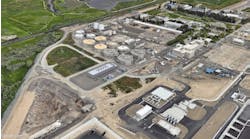The Idaho National Laboratory (INL) and Idaho Falls Power have successfully tested a hydropowered microgrid to improve the resilience and reliability of municipal power.
Idaho Falls Power is a municipal-owned utility in the city of Idaho Falls, Idaho. In conjunction with Idaho Falls Power, the Idaho National Laboratory began studying the benefits of hydropower microgrids in 2016.
The study was launched in response to a three-hour December 2013 blackout that left approximately 3,500 people in the city of Idaho Falls without access to electricity during extreme winter temperatures.
While Idaho Falls has been reliably providing its residents with hydropower for over a century, INL’s recent tests are the first to investigate local sustainability when disconnected from the modern power grid.
Currently, Idaho Falls Power generates about one-third of the city’s ordinary electricity demand at five hydroelectric power plants located on the Snake River.
The remaining two-thirds of the city’s energy is purchased from the national grid and regulated by a local balancing authority. This regional dependence was the cause for the city’s 2013 crisis after the balancing authority ordered load shedding with limited energy supply from Rocky Mountain Power, the neighboring utility that was experiencing blackouts.
The goal of this past week’s test was to determine whether the hydroelectricity produced by the city’s dams could provide enough energy to power emergency generators for hospitals, fire departments, police buildings, evacuation centers and other public health facilities.
To be considered successful, INL calculated that the hyrdopowered microgrid should be able to handle 20% of the city’s usual electrical demand. In previous tests, generators had produced up to 25% of the demand but were rendered unstable from the surge of electricity.
This week’s successful test incorporated ultracapacitors to help capture, store and distribute the energy. The test was carried out with the help of two 6-MW load banks used to isolate the city’s generators from the main power grid.
Ben Jenkins, Idaho Falls Power project manager, is hopeful that the data collected from the test will help develop reliable access to electricity using hydropowered microgrid projects in other communities.
Learn more about microgrids. Join us at Microgrid 2021: The World Awakens to Microgrids, a free virtual conference that begins May 11. Space on the platform is limited so we urge you to register now.







